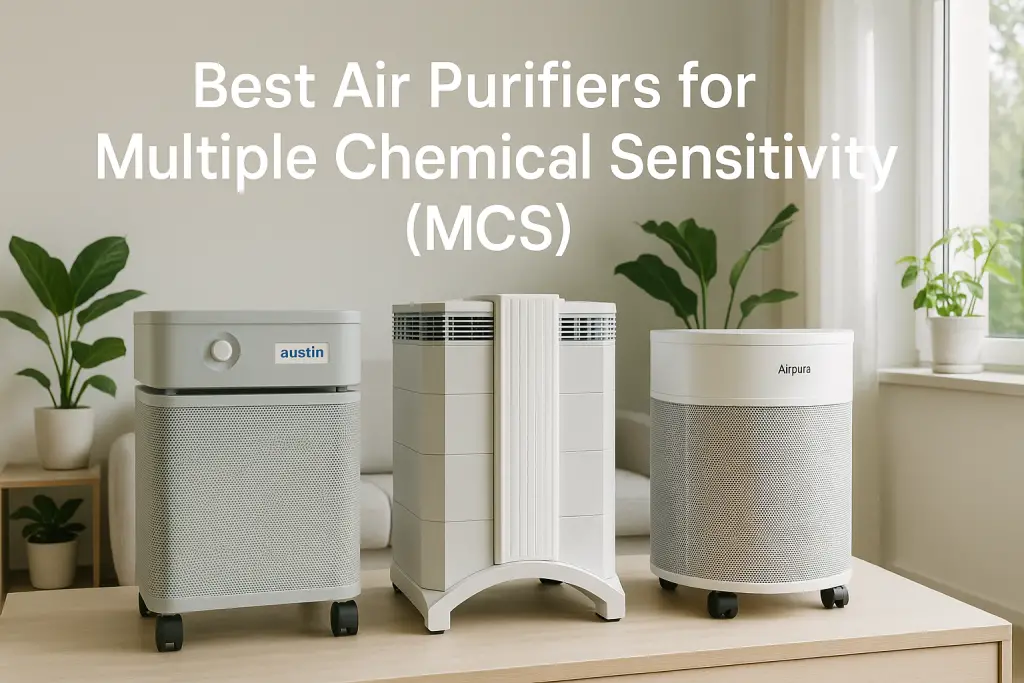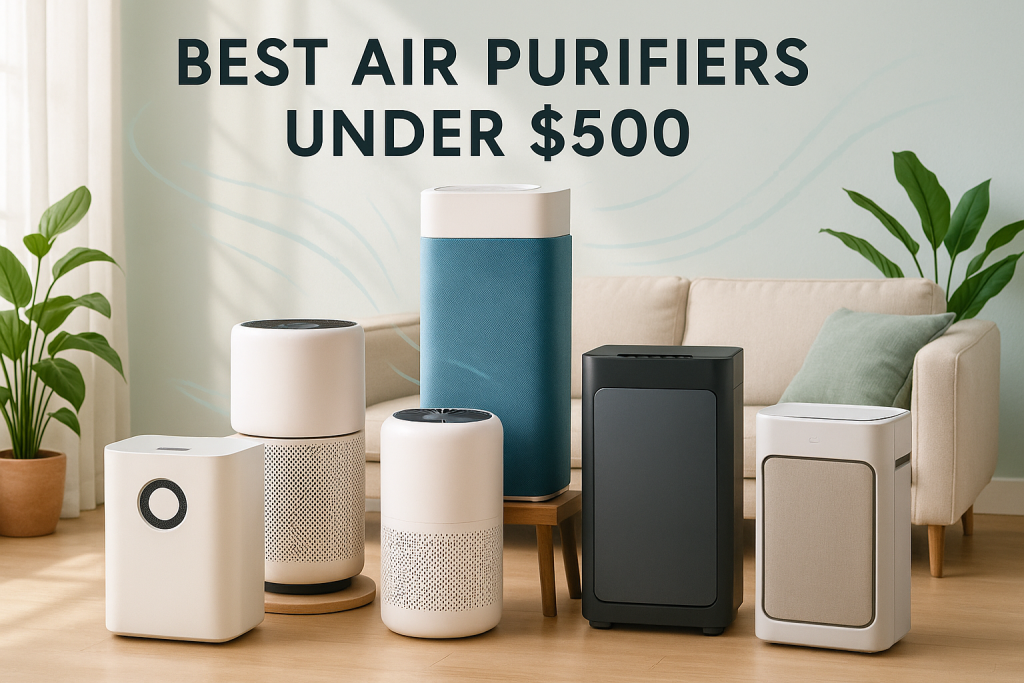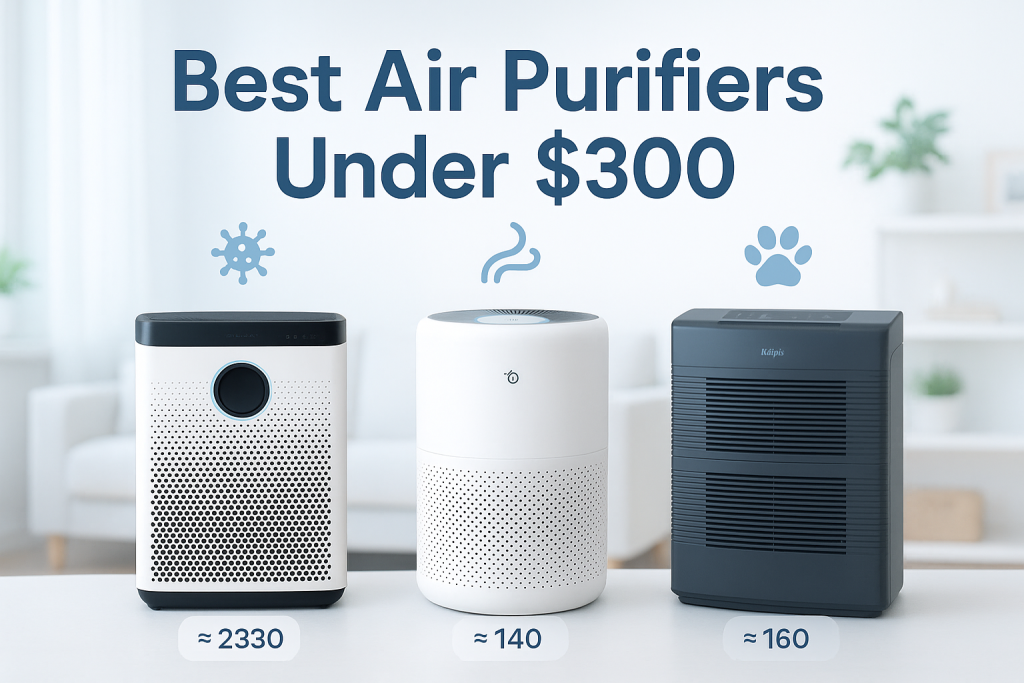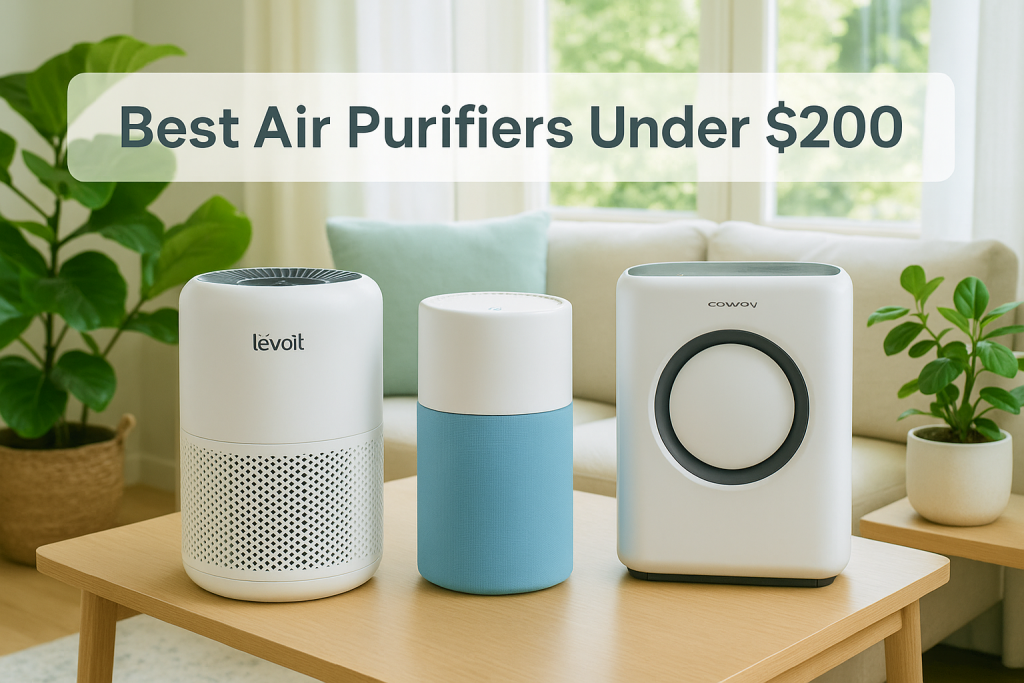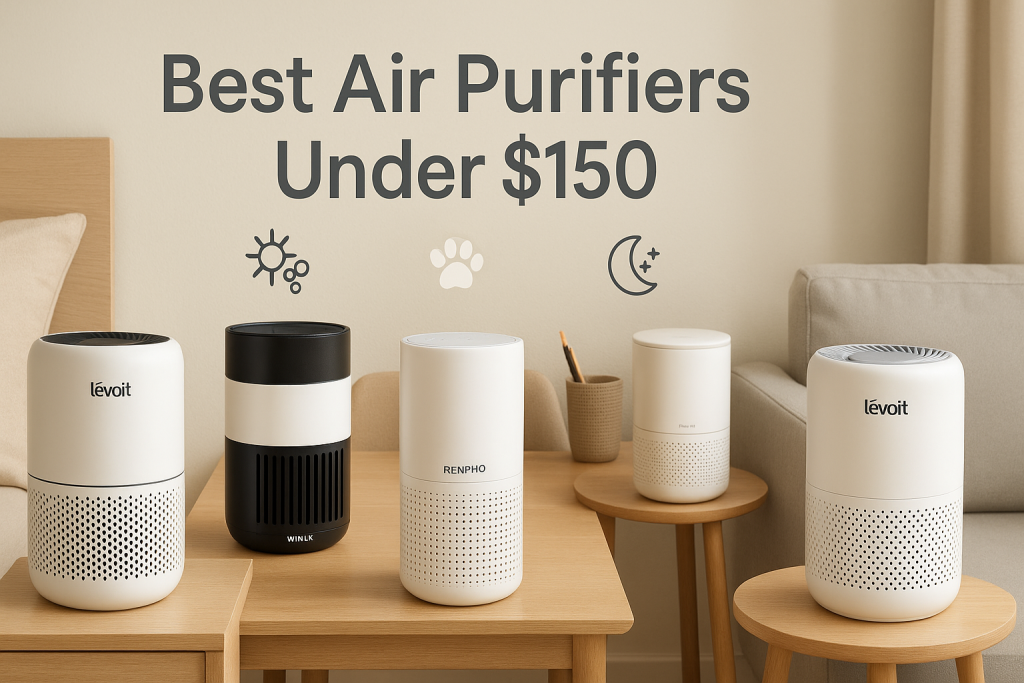Multiple Chemical Sensitivity (MCS) presents unique challenges when selecting air purifiers. For sufferers, even slight chemical exposures can trigger debilitating symptoms. Finding effective air purifiers that remove harmful chemicals without introducing new irritants is crucial. This comprehensive guide examines the most effective and safest air purifiers for MCS, based on scientific research and real-world experience from the MCS community.
Understanding Multiple Chemical Sensitivity and Air Quality
Multiple Chemical Sensitivity is a complex condition that manifests differently across individuals, but understanding its relationship with indoor air quality is crucial for effective management. MCS involves abnormal reactions to low levels of chemicals found in everyday products and environments that don’t affect most people.
According to research published in Environmental Health Perspectives, MCS sufferers experience symptoms when exposed to concentrations of chemicals far below regulatory thresholds. The Journal of Occupational and Environmental Medicine estimates that 12-16% of Americans report unusual sensitivity to common chemicals, with 2-6% having been diagnosed with MCS.
Dr. Lisa Nagy, an environmental medicine specialist, explains: “For MCS patients, the indoor environment can become a minefield of triggers. Effective air purification is often a frontline intervention that can significantly reduce symptom frequency and severity.”
Common Indoor Chemical Triggers for MCS Reactions
MCS sufferers react to a wide range of airborne chemicals at concentrations far below what affects the general population. Identifying these triggers is the first step in selecting an appropriate air purifier.
Common triggers include:
- Volatile Organic Compounds (VOCs): Found in paints, furniture, cleaning products, and building materials
- Formaldehyde: Emitted from pressed wood products, insulation, and many household items, requiring specialized air purifiers designed to remove formaldehyde effectively
- Fragrances and Perfumes: Present in personal care products, cleaning supplies, and air fresheners that can significantly impact air quality
- Combustion Byproducts: From gas stoves, fireplaces, and candles
- Semi-Volatile Organic Compounds (SVOCs): Including flame retardants and plasticizers that can persist in air for extended periods
Many of these chemicals remain airborne for hours or days, and some exhibit cross-reactivity, where exposure to one chemical can trigger sensitivity to others. Seasonal variations also affect indoor chemical levels, with temperature and humidity changes impacting outgassing rates from household materials.
Critical Selection Criteria for MCS-Safe Air Purifiers
Selecting an air purifier for MCS requires balancing effectiveness against the risk of the unit itself triggering reactions. These critical factors will guide you toward safer choices.
Understanding Filtration Technologies for Chemical Removal
Not all air purifier filters are created equal when it comes to removing chemicals. Understanding the science behind different filtration technologies is crucial for MCS sufferers.
| Technology | Effectiveness for Chemicals | Potential Concerns for MCS |
|---|---|---|
| HEPA Filtration | Minimal chemical removal (particles only) | Generally safe but insufficient alone |
| Activated Carbon | Effective for many VOCs and odors | Quality and quantity matter significantly |
| Molecular/Zeolite | Targets specific chemicals like formaldehyde | Safe for most MCS sufferers |
| Photocatalytic Oxidation | Breaks down some chemicals | Can produce byproducts problematic for MCS |
The most effective air purifiers for chemical removal use multiple filtration technologies in combination. Activated carbon works through adsorption, physically binding chemicals to its porous surface. The effectiveness depends on the amount and quality of carbon – purifiers with 5-15 pounds of activated carbon generally outperform those with thin carbon filters.
Safety Considerations: Materials, Emissions, and Outgassing
For MCS sufferers, the air purifier itself can become a source of problematic emissions. Understanding these safety considerations is essential before making a purchase.
- Housing Materials: Metal construction generally outgasses less than plastic components. Stainless steel and powder-coated metal are preferred.
- Gaskets and Seals: Rubber components can emit significant VOCs. Some manufacturers use low-emission alternatives.
- Initial Outgassing: New purifiers often require a “break-in” period in a separate space before being introduced to living areas.
- Motor and Electronic Components: Can emit formaldehyde and other chemicals when heated.
- EMF Emissions: Some MCS sufferers are also sensitive to electromagnetic fields.
Warning: Never use purifiers that generate ozone, even in small amounts, as this can severely worsen MCS symptoms and damage lung tissue.
Top Air Purifiers for Severe Multiple Chemical Sensitivity
For those with severe MCS, finding an air purifier that doesn’t trigger reactions is as important as finding one that removes chemicals effectively. These options have proven safest for highly sensitive individuals.
Austin Air HealthMate Plus: Comprehensive Analysis for MCS Users
The Austin Air HealthMate Plus has become a standard recommendation for MCS sufferers due to its all-metal construction and extensive chemical filtration capacity. Let’s examine its specific benefits and limitations.
Filtration Specifications:
- 15 pounds of activated carbon blended with zeolite
- True medical-grade HEPA for particle removal
- Specifically targets formaldehyde, ammonia, and VOCs
- 360° intake system for efficient air processing
Material Safety: All-steel construction with powder-coat finish minimizes outgassing. Contains no fragrance or chemical additives in filters.
Real User Experience: “After trying three other purifiers that caused reactions, the Austin Air was the first I could tolerate. The initial break-in period took about two weeks, but it’s been life-changing for my chemical sensitivities.” – Sarah L., MCS patient for 12 years
Maintenance Requirements: Filter replacement recommended every 5 years, making long-term ownership cost effective despite higher initial investment.
Coverage and Placement: Effectively covers up to 1500 sq. ft. when running on high setting. Works best when centrally located with good airflow.
Cost Analysis: Initial price range $700-900, with approximately $140/year cost when averaged over full filter lifespan.
Limitations: Heavier unit (45 lbs) with limited portability. Fan noise on higher settings may bother some users.
IQAir GC MultiGas
The IQAir GC MultiGas represents another top-tier option for severe MCS sufferers, with specialized gas-phase filtration and Swiss engineering for chemical removal.
Filtration Specifications:
- 12 pounds of activated carbon and impregnated alumina
- HyperHEPA filtration for ultrafine particles down to 0.003 microns
- Four separate filter stages including pre-filter
Material Safety: Non-outgassing ABS plastic housing specifically tested for chemical emissions. Sealed filter cartridges prevent carbon dust release.
Real User Experience: “The MultiGas was more expensive than others I tried, but it’s the only one that effectively removes the chemicals that trigger my worst symptoms. Worth every penny.” – Michael T., severe MCS sufferer
Maintenance: Filter replacement varies by component: Pre-filters (6-18 months), Gas phase (1-2 years), HEPA (2-4 years).
Coverage: Effectively covers up to 1125 sq. ft., with programmable fan speeds and filter life monitoring.
Cost Analysis: Initial investment $1000-1300, with annual maintenance cost of approximately $200-300.
Airpura R600
The Airpura R600 offers another metal-housed option with significant chemical filtration capacity and design features specifically addressing MCS concerns.
Filtration Specifications:
- 18 pounds of activated carbon in 2″ deep bed
- True HEPA filtration (99.97% of particles at 0.3 microns)
- Metal housing with no adhesives in air stream
Material Safety: All-metal construction with powder-coated finish. Features sealed gaskets and a felt filtration chamber that contains no chemical additives.
User Experience: “The Airpura required a shorter break-in period than other purifiers I’ve tried. The ability to select specific carbon blends for my particular sensitivities was a game-changer.” – Lisa M., MCS sufferer
Maintenance: Carbon filter replacement recommended every 2-3 years, HEPA filter every 5 years.
Coverage: Effectively covers up to 2000 sq. ft., making it suitable for larger spaces.
Cost Analysis: Initial investment $800-1000, with annual operating cost of approximately $150-250.
Best Air Purifiers for Moderate Chemical Sensitivity
Those with moderate MCS often have more options, balancing effective chemical removal with other factors like cost, noise, and aesthetics. These purifiers offer excellent performance while minimizing reaction risks.
AllerAir AirMedic Pro 5 MG
Key Features:
- 8 pounds of activated carbon with optional specialty blends
- Medical-grade HEPA filtration
- Metal housing with powder-coat finish
- Variable speed control
- Relatively quiet operation at lower speeds
Best For: Those with moderate chemical sensitivity who need targeted filtration for specific chemicals. The optional specialty carbon blends can be customized for formaldehyde, VOCs, or multiple chemicals.
Cost: $700-900 initial investment
Blue Air 211+ with SmokeStop Filter
Key Features:
- Activated carbon filter for gas and odor removal
- Particle filtration down to 0.1 microns
- Simple one-button operation
- Lower profile aesthetic design
- Energy Star certified
Best For: Moderately sensitive individuals who need effective filtration in smaller spaces like bedrooms or kitchens with cooking odors and airborne contaminants. Less intensive chemical removal than top-tier options.
Cost: $300-400 initial investment
Winix HR900 Ultimate Pet
Key Features:
- Advanced carbon filter for odor and chemical reduction
- True HEPA filtration
- PlasmaWave technology (can be turned off for MCS)
- Auto mode with air quality sensor
- Washable pre-filter
Best For: Those with moderate chemical sensitivity who also have pets. Particularly effective for addressing pet allergies alongside chemical sensitivities. Important: always operate with PlasmaWave function disabled for MCS.
Cost: $200-300 initial investment
Budget-Friendly Options for Chemical Sensitivity
Managing MCS often comes with significant expenses, but effective air purification doesn’t always require premium pricing. These budget-friendly options offer meaningful chemical removal while minimizing reaction risks.
Honeywell HPA300 with Enhanced Carbon Pre-filter
Key Features:
- Carbon pre-filter for light chemical and odor filtration
- True HEPA filtration for particles
- Coverage up to 465 sq. ft.
- 4 cleaning levels
Limitations: Limited chemical removal capacity compared to specialized units. May require more frequent filter changes for effective chemical control.
Enhancement Tips: Purchase additional carbon pre-filters and layer them for improved chemical adsorption. Allow new unit to run in garage or outdoor space for 3-5 days before bringing indoors.
Cost: $200-250 initial investment with approximately $100 annual filter replacement cost
DIY Enhanced Carbon Filter System
For those with limited budgets but willing to implement a custom solution:
Components:
- Box fan ($20-30)
- Bulk activated carbon ($30-50)
- MERV 13 furnace filter ($15-20)
- Filter material for containing carbon
Construction Method: Create a carbon-filled “sandwich” filter that attaches to a standard box fan. Detailed DIY instructions are widely available online.
Effectiveness: While not as efficient as commercial units, this approach can provide meaningful chemical filtration for those unable to afford specialized purifiers.
Considerations: Requires manual assembly and careful handling of carbon. Not as aesthetically pleasing or convenient as commercial options.
Levoit Core 300 with Toxin Absorber Filter
Key Features:
- Specialized filter with activated carbon
- H13 True HEPA filtration
- Compact design for smaller spaces
- QuietKEAP technology for reduced noise
Limitations: Limited carbon quantity means less chemical removal capacity than larger units. Best for smaller spaces like bedrooms or basements with specific air quality concerns.
Cost: $100-150 initial investment with approximately $70-90 annual filter replacement cost
Complementary Strategies for Creating MCS-Safe Air
Air purifiers are most effective when part of a comprehensive approach to indoor air quality. These complementary strategies enhance purifier performance and create a more chemically-safe environment.
Source Reduction
Eliminating chemical sources is the most effective first step:
- Replace chemical cleaning products with natural alternatives (vinegar, baking soda)
- Remove synthetic fragrances from all products (detergents, personal care items)
- Choose low-VOC or no-VOC paints and finishes
- Replace gas appliances with electric when possible
- Air out new furniture and textiles before bringing indoors
Ventilation Optimization
Strategic ventilation complements filtration:
- Create cross-ventilation paths when outdoor air quality permits
- Use exhaust fans in kitchens and bathrooms to remove chemical-laden air
- Consider energy recovery ventilators (ERVs) for controlled fresh air exchange
- Implement morning ventilation when outdoor pollution levels are typically lower
Creating a “Safe Room”
Designate one room with maximum air quality control:
- Remove all unnecessary items, especially synthetic materials
- Use minimal, natural furniture (solid wood, glass, metal)
- Install multiple air purifiers for enhanced filtration
- Apply silicone caulk to seal gaps where chemicals might enter
- Use natural bedding and window coverings
Air Quality Monitoring for Chemical Sensitivity
For MCS sufferers, knowing exactly what’s in your air can be invaluable for both validating concerns and measuring improvement. Modern air quality monitors can detect many relevant chemicals at levels important for sensitive individuals.
Recommended consumer-grade monitors for MCS applications include:
- Airthings View Plus: Monitors VOCs, PM2.5 particulate matter, CO2, humidity, and temperature
- uHoo Indoor Air Quality Sensor: Tracks 9 air quality parameters including VOCs and chemicals
- IQAir AirVisual Pro: Provides detailed readings for particles and limited chemical detection
When interpreting readings, MCS sufferers should note that most consumer devices don’t identify specific chemicals, only general VOC levels. For comprehensive testing, consider professional industrial hygiene services that can identify and quantify specific chemical compounds.
Practical Implementation Guide: Introducing a New Air Purifier
For MCS sufferers, introducing a new air purifier requires careful planning to prevent reactions. This step-by-step implementation protocol has helped many sensitive individuals safely integrate new purifiers.
Pre-Testing Protocol
- Unbox the purifier outdoors or in a garage, wearing protective gear if needed
- Remove all plastic packaging and allow to air out for 24-48 hours
- Run the purifier on low setting in an unoccupied space for 3-7 days
- After the initial break-in period, bring the purifier to the threshold of your living space and run for several hours
- Check for any reactions before bringing fully into your living environment
Gradual Introduction Method
- Begin with the purifier running on lowest setting in your space for 1 hour per day
- If no reactions occur, increase duration by 1-2 hours daily
- After comfortable with extended operation, gradually increase fan speed
- Monitor for delayed reactions, which can occur 12-24 hours after exposure
- Keep a symptom journal to track any potential correlations
Safe Maintenance Protocols for MCS Sufferers
Filter maintenance presents a particular challenge for MCS sufferers, as used filters contain concentrated pollutants. These safety protocols help minimize exposure during necessary maintenance.
Safety Equipment:
- N95 respirator or VOC-rated mask
- Nitrile gloves (not latex, which can cause reactions)
- Long-sleeved clothing
- Eye protection
Filter Replacement Steps:
- Move purifier to outdoor area or well-ventilated space away from living areas
- Have replacement filters ready and unwrapped (pre-aired if possible)
- Don protective gear before opening the purifier
- Remove old filters directly into sealed plastic bags
- Clean accessible non-filter components with microfiber cloth
- Install new filters quickly and close unit
- Allow purifier to run outdoors or in isolation for 24-48 hours before returning to living space
If possible, arrange for a less-sensitive person to perform maintenance tasks while you remain in a different location.
Comparing Top Brands for Chemical Sensitivity Applications
Certain manufacturers have earned reputations within the MCS community for their attention to chemical filtration and low-emission materials. Understanding these brand differentiators helps inform purchasing decisions.
| Brand | Chemical Filtration Approach | Material Considerations | MCS Community Reputation |
|---|---|---|---|
| Austin Air | Large carbon/zeolite blend (12-15 lbs) | All-metal construction, medical approach | Widely recommended, long track record |
| IQAir | Specialized gas-phase media, multiple stages | Low-emission plastics, sealed system | Trusted for severe MCS, medical-grade |
| Airpura | Customizable carbon blends, large capacity | Metal housing, no adhesives in airstream | Popular with EI community, customizable |
| AllerAir | MCS-focused carbon blends, deep beds | Metal housing options, medical approach | Solid reputation, physician-recommended |
| Blueair | Combined electrostatic+carbon approach | Some plastic components, design-focused | Mixed reviews from MCS community |
Austin Air and IQAir consistently receive the strongest recommendations from environmental medicine physicians who specialize in treating MCS patients. Both companies were founded specifically to address serious health concerns and maintain rigorous manufacturing standards.
The Science Behind Air Purification for Chemical Sensitivity
Understanding the scientific principles behind air purification helps MCS sufferers make more informed decisions and set realistic expectations for symptom relief.
The effectiveness of chemical filtration depends on several key factors:
- Adsorption Capacity: Activated carbon removes chemicals through physical adsorption, where molecules adhere to the vast surface area within carbon’s porous structure. One gram of activated carbon has up to 2,000 square meters of surface area.
- Residence Time: The longer air remains in contact with filtration media, the more complete the chemical removal. Slower airflow through deeper carbon beds provides superior chemical adsorption.
- Chemical Properties: Different chemicals have varying affinity for carbon. Research from the EPA shows that chemicals with higher molecular weights are typically easier to remove than lighter, more volatile compounds.
- Competitive Adsorption: When multiple chemicals are present, they compete for binding sites on carbon. Higher concentrations of one chemical can displace others already captured.
A 2018 study published in Building and Environment demonstrated that properly designed carbon filtration could remove 90-99% of many VOCs from indoor air during a single pass, though effectiveness varied significantly by specific compound.
Research from the Journal of Environmental Health found that MCS patients reported symptom improvement when indoor VOC levels were reduced below 0.5 mg/m³, significantly lower than levels considered acceptable for the general population.
FAQ: Critical Questions for MCS Sufferers About Air Purifiers
MCS sufferers often have specific concerns about air purifiers that aren’t addressed in general product information. These frequently asked questions address the most common concerns.
Can air purifiers make MCS symptoms worse?
Yes, certain air purifiers can worsen MCS symptoms. Units that generate ozone, use fragranced filters, contain significant plastic components, or use adhesives in the air path may trigger reactions. Always select purifiers specifically designed or tested for MCS, and implement them gradually using the protocols described earlier.
How long should I run an air purifier for MCS?
For most MCS sufferers, air purifiers should run continuously. Chemical emissions from building materials, furniture, and consumer products occur 24/7. Running continuously at a lower speed is generally more effective than intermittent operation at high speeds. During acute exposure events, increase to maximum speed temporarily.
Do I need different purifiers for different chemicals?
Possibly. While high-quality purifiers with substantial activated carbon can remove a broad spectrum of chemicals, some compounds require specialized filtration. Formaldehyde, for instance, is better addressed with molecular sieve media or specially impregnated carbon. If you have identified specific chemical sensitivities, select purifiers with filtration optimized for those compounds.
Are ozone-free ionizers safe for MCS?
Most MCS specialists recommend avoiding all ionizing technologies, even those marketed as “ozone-free.” These technologies can produce reactive oxygen species and other byproducts that may trigger symptoms in sensitive individuals. Mechanical filtration through HEPA and activated carbon remains the safest approach for MCS.
Should I get a whole-house system or portable units?
This depends on your housing situation and severity of MCS. Whole-house systems connected to HVAC offer consistent filtration throughout the home but may not provide the concentrated filtration needed in specific spaces. Many MCS sufferers use a hybrid approach: a whole-house system for baseline filtration plus high-performance portable units in bedrooms and most-used living spaces.
Conclusion: Creating a Safer Indoor Environment for MCS
Managing Multiple Chemical Sensitivity requires a multifaceted approach, with air purification serving as one crucial component. By selecting appropriate purifiers and implementing complementary strategies, many sufferers experience significant symptom relief.
The most successful approaches for MCS air quality management include:
- Selecting air purifiers with substantial activated carbon (5+ pounds) and all-metal construction
- Implementing careful break-in and maintenance protocols to prevent reactions
- Combining air purification with aggressive source reduction
- Creating at least one “safe room” with optimized air quality
- Using air quality monitoring to validate improvements
Remember that individual sensitivities vary greatly – what works for one person may not work for another. The journey to creating safer air often involves trial and error, careful observation, and persistence. With methodical implementation of the strategies outlined in this guide, most MCS sufferers can achieve meaningful improvements in their indoor air quality and quality of life.
| Photo | Air Purifier Model | Best for | Price |
|---|---|---|---|

|
WINIX A231 Air Purifier | Asthma & Indoor Pollution | Check Price On Amazon |

|
Rabbit Air, A3 SPA-1000N Air Purifier | Pet Dander & Odors | Check Price On Amazon |

|
LEVOIT Air Purifier | Best Overall | Check Price On Amazon |

|
GermGuardian Air Purifier | Cigarette & Cooking Smoke | Check Price On Amazon |

|
Coway Airmega Air Purifier | New-borns | Check Price On Amazon |

|
BLUEAIR Air Purifier | Germ & Virus Control | Check Price On Amazon |
